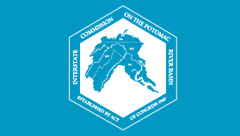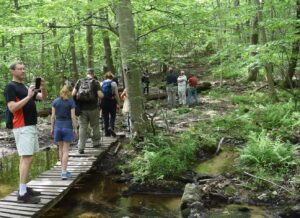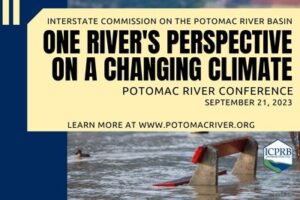ICPRB Publishes the September Water Supply Outlook
The ICPRB, through its Section for Cooperative Water Supply Operations on the Potomac (CO-OP), coordinates water supply operations during times of drought and recommends releases of stored water. These operations ensure adequate water supplies for Washington metropolitan area water users and for environmental flow levels. The Water Supply Outlooks are published by CO-OP on a monthly basis between April and October. They are meant to provide an update on the possibility of low-flow conditions in the Potomac basin.
The September Water Supply Outlook states there is a much above-normal probability of releases from the Washington metropolitan area’s backup water supply reservoirs for the 2023 summer and fall seasons. These releases are typically prompted by low flows resulting from a combination of insufficient summer precipitation and low groundwater levels. August’s average Potomac Basin precipitation was 0.8 inches below normal as of the 29th, with a long-term (12-month) cumulative deficit of about 7.1 inches (11 to 25 percent below normal). Consequently, Little Falls’ adjusted stream flow remains below average yet above the historical minimum, and groundwater monitoring indicates below-normal levels. Presently, the Potomac River observed flow at Little Falls Dam, Washington D.C., is at 472 MGD (730 cfs), demanding close monitoring under CO-OP’s declared enhanced drought operations since August 25. The Washington Aqueduct voluntarily shifted water withdrawals from Great Falls to Little Falls to ensure river environmental flows. Notably, a substantial portion of the Potomac watershed is facing D1 drought conditions per the U.S. Drought Monitor, triggering a discussion among the Metropolitan Washington Council of Governments (MWCOG) Drought Coordination Technical Committee (DCTC) to potentially initiate a “Drought Watch” stage. Despite basin conditions, the Potomac River’s flows are currently adequate to meet the water demands of the Washington metropolitan area without requiring releases from upstream reservoirs. Thanks to well-designed drought-contingency plans, the area is well-prepared to handle further reductions in flow.




